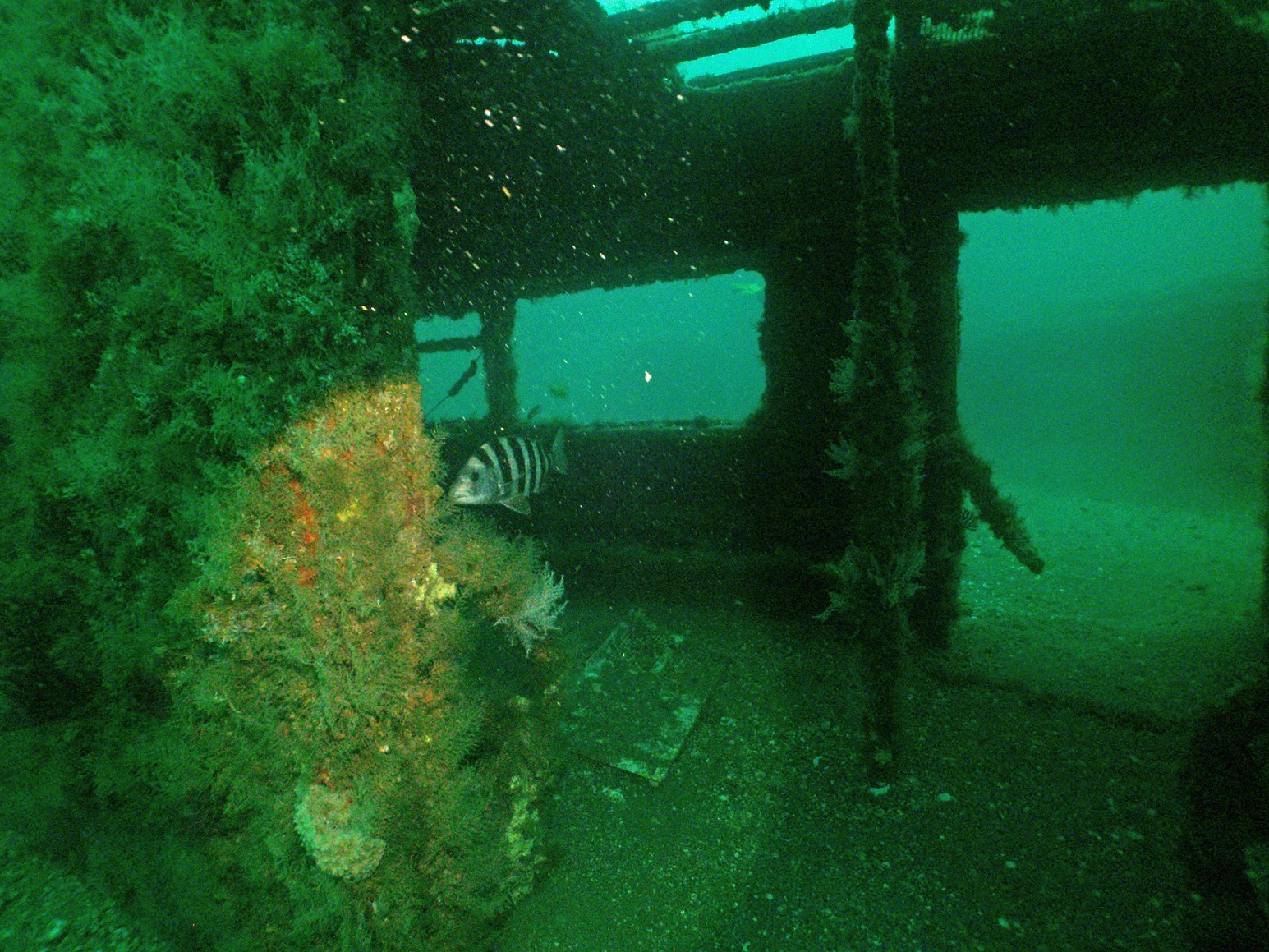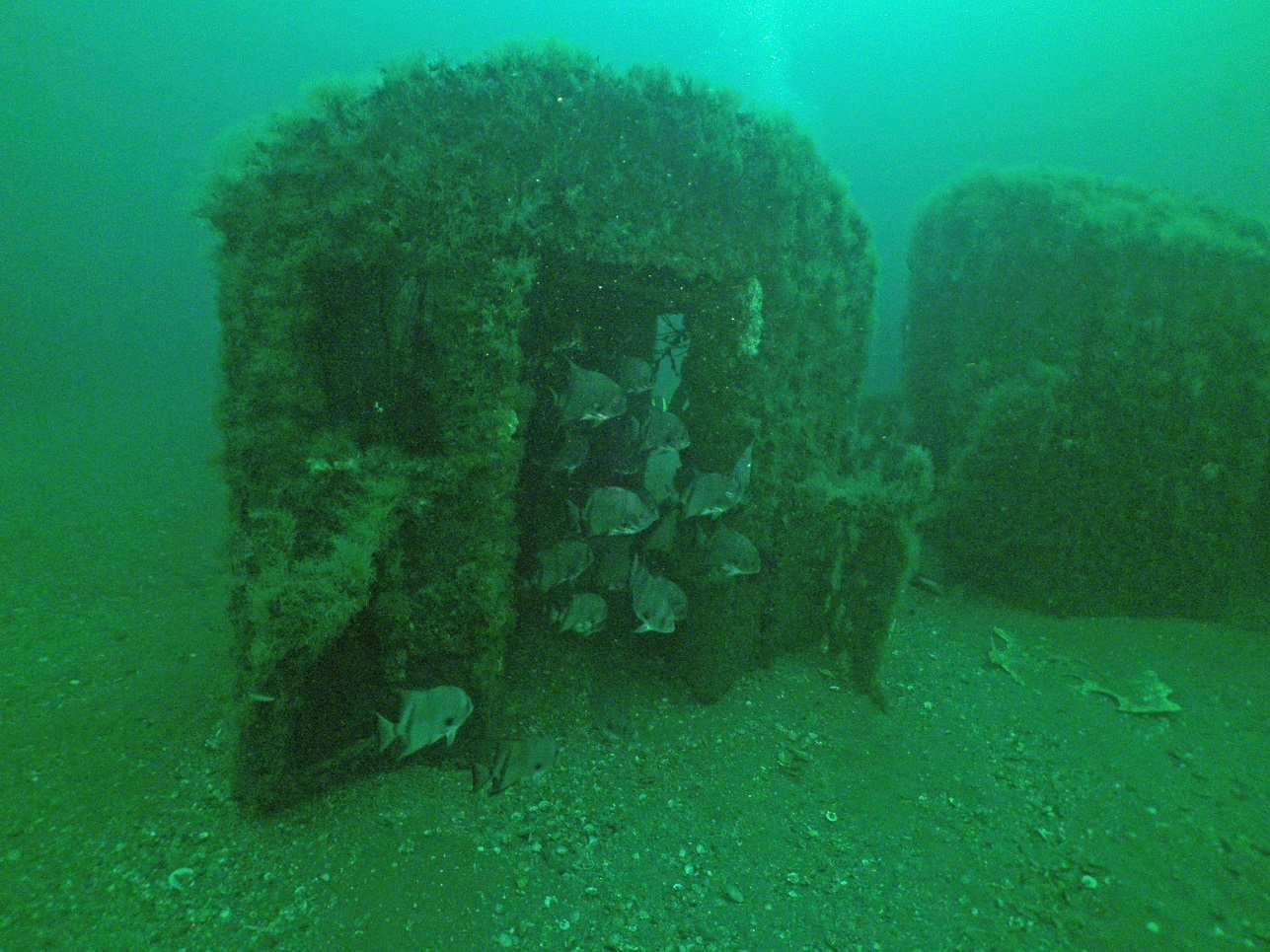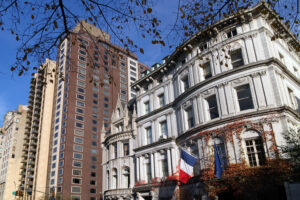
Inside an old NYC subway car at Redbird Reef. (Robert Martore/South Carolina Department of Natural Resources).
New York City’s old subway cars are sleeping with the fishes. Thousands of the decommissioned train cars were placed in the Atlantic Ocean over the last two decades as part of an artificial reef program that doubled as a disposal strategy for the old cars. Captured by photographer and filmmaker Stephen Mallon, the story of this feat of engineering and sustainability is currently on display at the New York Transit Museum Gallery & Store at Grand Central Terminal.
Turning 2,500 Old NYC Subway Cars Into a Reef
From 2001 to 2010, the MTA placed more than 2,500 cleaned and stripped train cars underwater off the coasts of Delaware, New Jersey, Virginia, Maryland, South Carolina, and Georgia, to create artificial reefs. The reefing program was completed in two phases. The first, from 2001 to 2003, saw 1,269 of the “Redbird” train cars deposited. This was followed by a second phase from 2008 to 2010, with an additional 1,311 stainless steel “B-Division/Brightliner” cars lowered down into the sea.
Stephen Mallon captured the last leg of the disposal process. His current exhibit “Sea Train: Subway Reef Photos by Stephen Mallon” shows the massive scale of this undertaking. He discovered the project by accident when he came upon a barge full of train cars in New Jersey. He inquired with the contractor on site, and for two years, from 2008 to 2010, Mallon was able to tag along, tracking the preparation and cleaning of the cars, and capturing the scene when they were dropped off at their new aquatic homes.
How the Subway Cars Were Taken Out to Sea
First, the old train cars were taken to NYC Transit’s 207th Street Overhaul Shop. There they were cleaned and prepped according to U.S. Environmental Protection Agency protocols, which included having all their grease and debris removed. The cleaned and stripped cars were then placed onto barges in the Harlem River. Once the barges were loaded, the cars were taken out to sea, with GPS used to place them in a designated artificial reef at the ocean floor.
Subway cars aren’t tiny, but they transform into Lego-sized blocks when juxtaposed against the expanse of the Atlantic Ocean in Mallon’s photos. Getting all of that on camera was no small feat either. Mallon went along in a separate boat to track the placement. Being in the right spot at the right time proved a challenge, and even the most seasoned crew members got seasick.
The boat captain was able to put Mallon on either side of the barge to help him frame the images. “There’s one image, ‘Splash,’ where I asked to get a bit more of a splash for the photograph, and it turned out pretty well,” Mallon says. Once the barge reached the drop-off site, it took just a little over an hour to drop all the cars.
“I was never underwater, so I just needed to keep myself steady on the back of the boat,” says Mallon of the experience of shooting out there. “It’s kind of like surfing or skiing — just keep your balance, keep the horizon line straight, bend your knees and don’t fall overboard.”

Redbird Reef, made of decommissioned “Redbird” subway cars, was created from 2001 to 2003. (Robert Martore/South Carolina Department of Natural Resources)
The Subway Reef Project Has Come and Gone
The artificial reef program turned out to be beneficial to the environment and the NYC Transit budget, too, saving the $30 million it would’ve cost to otherwise dispose of the trains. As for marine life near the reef, it’s thriving. The original Redbird reef has created a new habitat for coral and sponges in addition to mussels, flounder, sea bass, tuna, and mackerel.
The last car was placed into the sea on Earth Day, 2010. Despite the program’s success, changes in how NYC Transit disposes of old cars have brought the reef program to an end. While great for decommissioning large fleets of cars at the same time, the program is less efficient for disposing of a few at once.
Although the subway reef program has ended, curious straphangers can experience the project through Mallon’s photos. The Sea Train exhibit runs through June 16, 2019.
—
Send your NYC real estate stories and tips to StreetEasy editors at tips@streeteasy.com. You will remain anonymous. And hey, why not like StreetEasy on Facebook and follow @streeteasy on Instagram?









